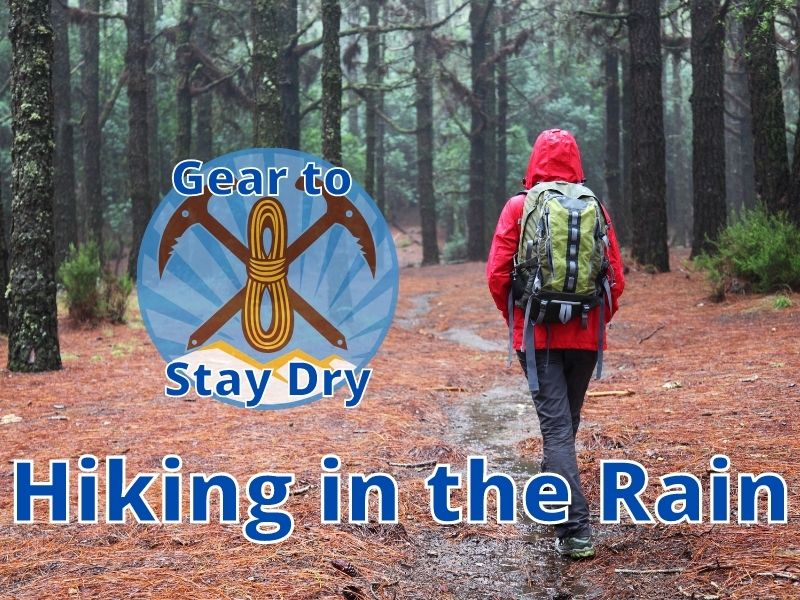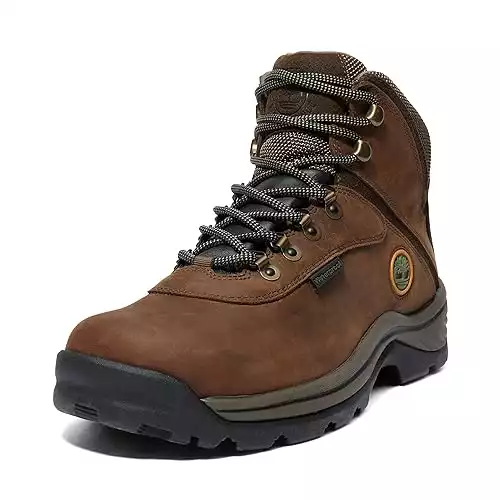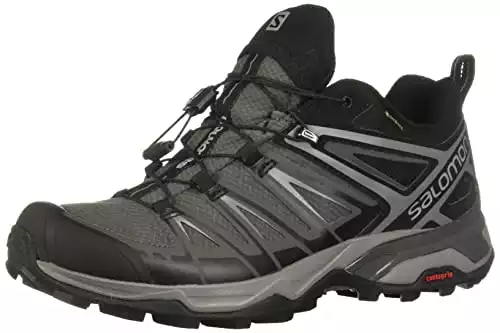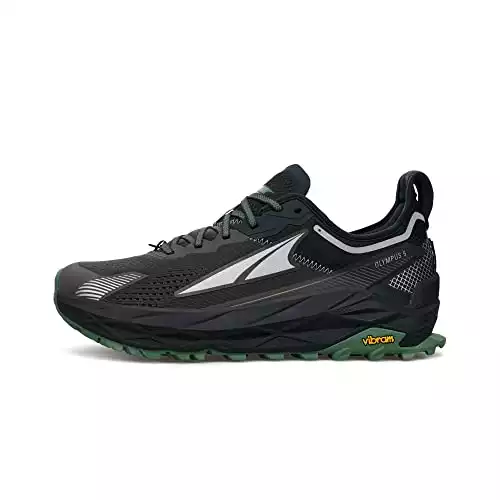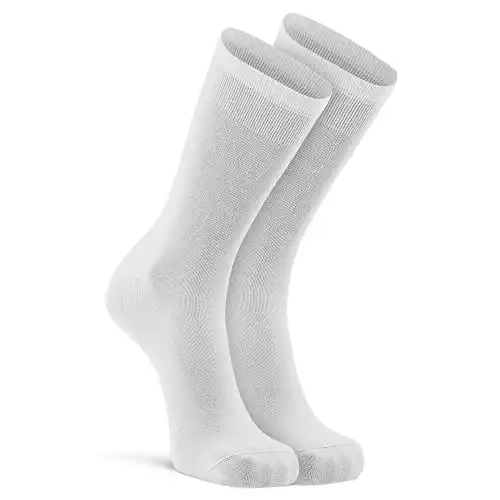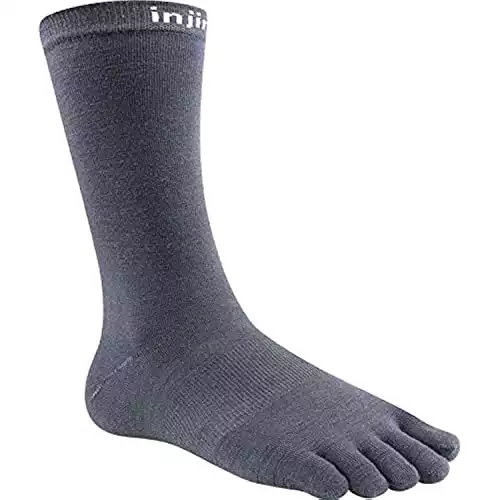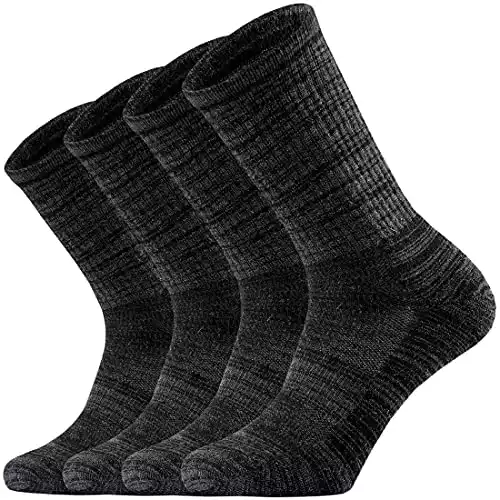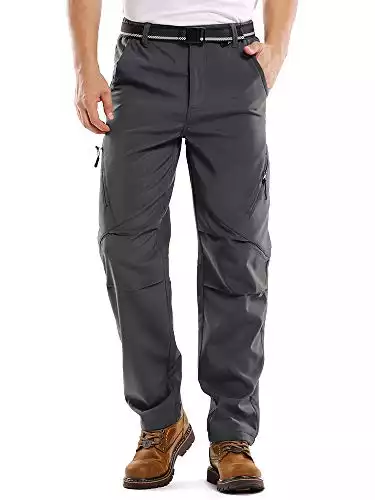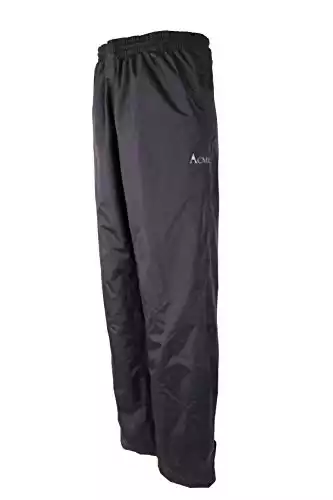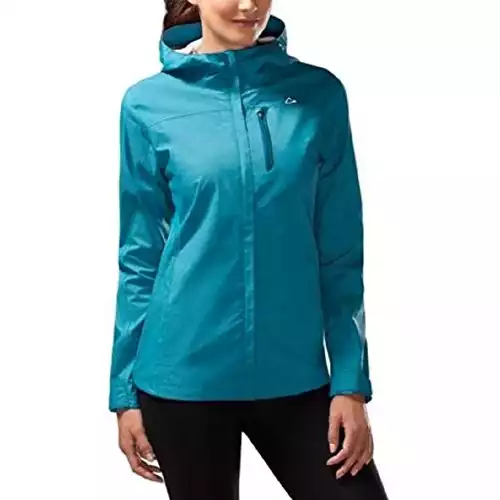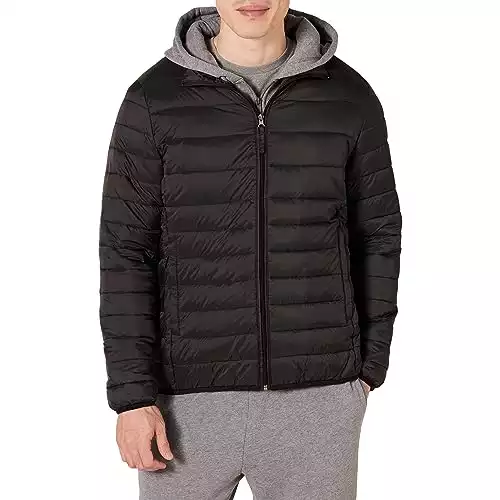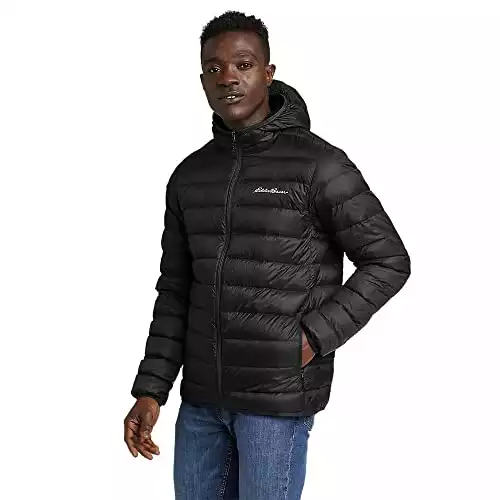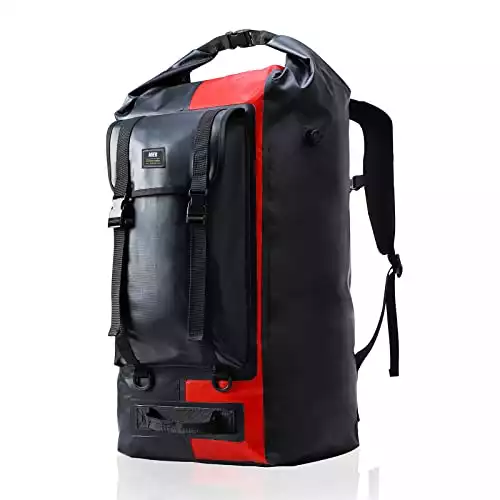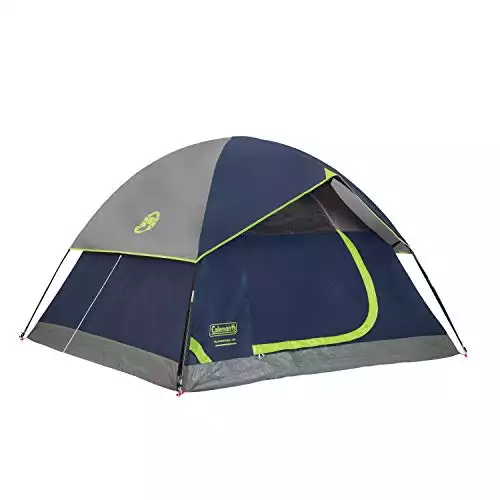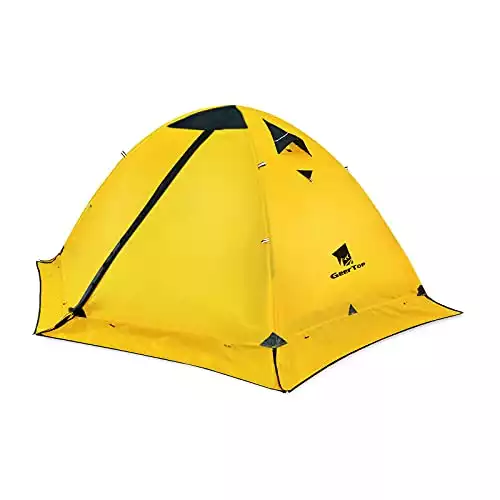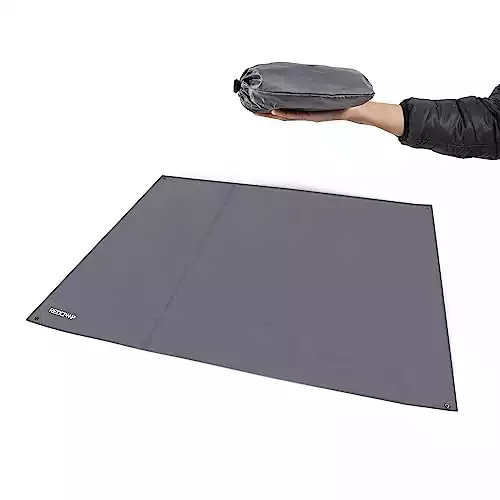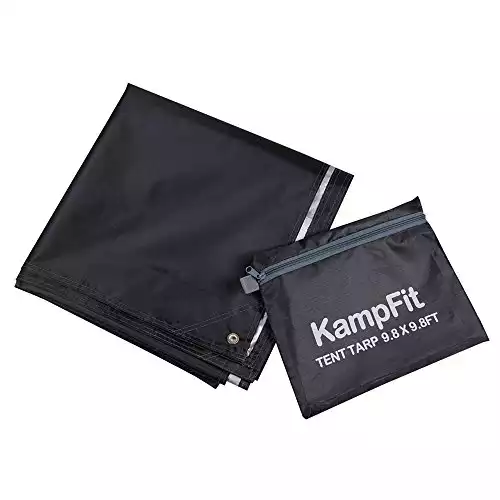Hiking while it’s raining can be difficult, but it’s normal to get some rain during a multi-day backpacking trip. The best way to ensure an enjoyable time hiking is to be prepared. If you have layers of clothing to wear when hiking you can get the most comfort from your hiking experience and waterproof clothing and gear will ensure you don’t get completely soaked.
The gear you need to stay dry on a rainy hike are comfortable shoes, waterproof pants, a rain jacket, and a waterproof backpack or cover. If you are camping and hiking you’ll need to consider how waterproof your tent is and if you need a waterproof footprint.
When I was camping in the rain my tent claimed to be waterproof but leaked. Not all tents or gear are made the same, so getting good equipment will make a difference in your overall hiking experience.
Finding Good Hiking Shoes
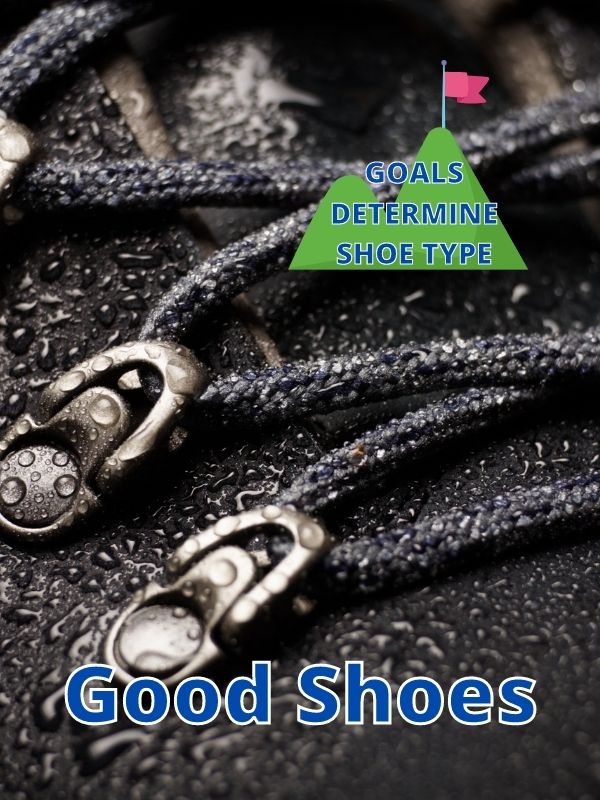
Getting a good pair of hiking shoes is probably the most important gear you’ll need for a good hiking experience. There are many good waterproof hiking shoes to choose from.
Hikers all choose different shoes based on their many characteristics. Getting waterproof shoes isn’t always the highest priority if they will be hiking most of the time because hikers want comfort. That’s why many hikers choose lightweight shoes that are often not waterproof.
Comfortable shoes are often trail running shoes or light hiking shoes. These shoes may not be waterproof, so what do hikers do when it rains? They just let their shoes dry out.
There are circumstances where having a waterproof shoe would be better though. This is when you know what the trail is going to be like and what the weather is like as well. Although, if you’re hiking for several days the chances that things could change are very likely.
Waterproof Shoes or Non-Waterproof Shoes
Depending on the circumstances of your hike, you will likely want one type of shoe over the other.
When to Wear Waterproof Shoes
- Light Rain
- Snow (May depends on conditions)
- Shallow Streams 1″ – 2″
- Cold Weather – Below freezing
RECOMMENDED GEAR
If I were going to use waterproof shoes, I would choose something like the following shoes below.
Each shoe and trail will be different, but in general, the guidelines shown above will help you choose the right shoe for your hike. I used the Altra Superior 3.5 when I was day hiking but would use a shoe with more cushioning for longer hikes.
Why Wear Waterproof Hiking Shoes

You will likely want to get these types of shoes when your shoe will get splashed and need to cross over shallow streams. If you cross a stream where water gets into your waterproof shoe, it will take much longer to dry (could be several days) than a light non-waterproof shoe.
If you encounter a downpour of rain, waterproof shoes are going to get wet inside. But you may be able to prevent this if your shoes have a watertight shoe tongue and if you wear waterproof gaiters.
For both waterproof and non-waterproof shoes, getting water inside when the weather is cold may make your shoes and socks freeze. That makes it very difficult to put on and hike in when the morning comes. Make sure no water gets inside your shoes if you are hiking in the cold.
Waterproof shoes will likely keep your feet warmer than non-waterproof shoes. In cold weather, you may want waterproof boots over other types of hiking shoes.
Why Wear Non-Waterproof Hiking Shoes

You will likely want to get this type of shoe when you are hiking long distances. When you cross a stream, it’s okay for your shoes to get wet because they will easily dry out overnight.
If there is heavy rain, waterproof shoes tend to get wet inside, so lightweight non-waterproof shoes are helpful, so they can dry faster overnight.
If you cross a stream where water gets into your waterproof shoe, it will take much longer to dry (could be several days) than a non-waterproof shoe.
These work best in warmer weather. Getting ones that breathe well will help them dry faster.
Trail Running Shoes
Many hikers prefer trail runners for long-distance hikes. They are comfortable and this video explains why you might want to choose a waterproof shoe or a non-waterproof shoe.
Shoes for Beginner Long Distance Hikers

If I was going on a long hike, I would want to bring some good trail running shoes. This might not be best for everyone, especially beginners.
A good hiking boot can last a long time and provide good protection from the weather, sharp and hard objects, and other things your feet might encounter along the trail.
Many hiking boots are great for beginners because they can give your foot a lot of support for both your arch and ankle. They can do some of the work your foot would normally do if you are walking long distances. At the end of the day, with a good hiking boot, your feet won’t be so tired.
These boots are good for beginners, although some of these boots may take a while to break in, so don’t expect them to be comfortable until after a few days to a week of hiking.
You’ll need to get used to the weight of the boots and try to ensure they don’t get wet inside. You could be stuck wearing wet boots for several days because they don’t dry out well.
Trail Running Shoes for Beginners
If a beginner hiker chooses a trail runner to hike in, it should be a capable shoe that can climb rocks, cross streams with a non-slip tread, and have enough support for the trail that it is used on. Some trail runners are too soft, so getting a thicker sole or firmer sole can help stabilize the shoe while hiking.
Hiking in Wet Socks
If you do get your socks wet during your hike, you may be okay with a little moisture, but if they are soaked you’ll either need to have prepared before the hike or take action during the hike to prevent blisters.
PREPARE BEFORE
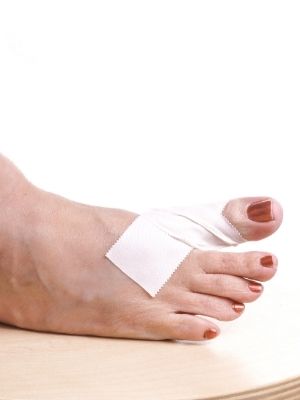
Tape Foot at Key Points
Some hiker will prepare their feet with tape and leave it on throughout their hike. This helps stop rubbing and blisters.
Many hikers also use foot creams to lubricate the feet in areas that could rub. This stops water from softening the skin so it won’t rub and peel from friction.
DURING HIKE

Remove Most of the Water
If you have wet socks and socks, it’s a good practice to take a break and remove as much of the water from your socks and shoes as possible.
If you use wool socks and wool sock liners, this will help because they let go of moisture well. Read this article to find other socks that let go of water well.
Recommended Socks
Depending on your preferences you will likely want to wear wool socks for warmth, moisture-wicking, and because they dry fairly easily.
Sock Liner
RECOMMENDED GEAR
Sock liners help prevent rubbing and blisters. You might want a wool sock liner because they are great at protecting your feet.
Waterproof or Water Resistant Pants for Hiking

Once you decide on the shoes that are best for your hike, get some waterproof or water-resistant pants. If you are hiking in rain most of the hike, then a good pair of waterproof pants is the way to go. If you are hiking in half rain and half not, then some waterproof pants will likely be your best choice.
Water Resistant Pants or Waterproof Pants
Depending on the circumstances of your hike, you will likely want water-resistant pants or waterproof pants.
When to Wear Water Resistant Pants
- Raining for short periods
- Warmer Weather
- To look nicer when hiking
- Rougher hiking activities
When to Wear Waterproof Pant
- Raining for long periods
- Colder Weather
- Not worried about looks
- Milder hiking activities
Why Wear Water-Resistant Pants
AD – Amazon.com
These pants are good for light rainy conditions. They tend to be water-resistant but not waterproof. When it is likely to rain at some point but not all day, you could be safe with these.
Many of these pants are quick-drying and are comfortable to wear. They can be worn alone and can range from a bit heavier to light-weight.
They usually fit over boots and have a certain level of stretchiness in the material.
Although some of these pants are heavier than waterproof pants, they tend to be very comfortable and are usually very durable.
Using this type of hiking pants can help you stay dry in warmer weather because they usually dry fast, and light rain should dry off fairly quickly.
Why Wear Waterproof Pants
AD – Amazon.com
These pants are good for consistently rainy conditions or when it is likely to rain each day on your hike. They are usually made of the same material as a light rain jacket (PVC or other material) and can stop the rain fairly well.
You’ll likely see a 1,000mm – 10,000mm waterproof rating or more for your waterproof pants. The higher the number, the more water-resistant it is. A higher number may feel more plastic-like than fabric-like.
Most waterproof pants are breathable and are made of mostly nylon or mostly polyester. If it’s going to be cold and rainy most of the time, it makes sense to get some insulated rain pants, sometimes called ski or snow pants.
Some things to look for when getting waterproof pants are:
- The waterproof rating (Low 1,000mm – High 10,000mm)
- Breathability rating (Low 500mg, Medium 1500mg, High 3000mg or more)
- Taped seams
- Adjustable waist and cuffs
- Look to see if it is windproof
- How durable is it? (Nylon tend to be more durable than PVC)
Rain Jackets for Hiking in the Rain
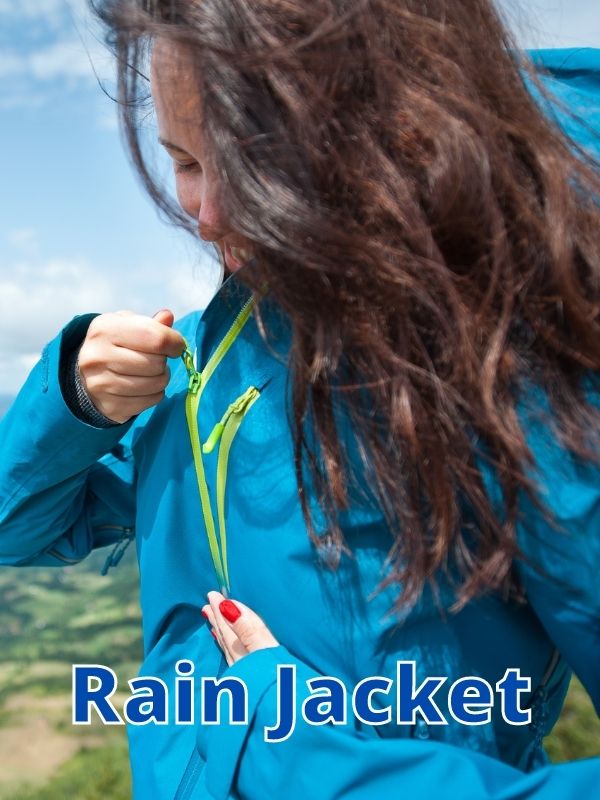
I live in Southern California, so I don’t see much rain. A couple of years ago I traveled to Canada and needed a lightweight rain jacket that I could take with me. I found one that worked well and was easy to store because it was so thin.
A rain jacket like mine can work well when you go hiking in the rain. Many lightweight rain jackets can breathe and still keep you dry.
Your rain jacket should be light and easy to pack away. A bulky jacket doesn’t work well when hiking. In cold weather, you’d want to either add a layer or two under your rain jacket or get a thin down rain jacket.
Recommended Rain Jackets
Depending on the weather, you might want to wear a thinner or thicker rain jacket. Most hiking jackets are lightweight and can fit in a small bag.
Warm Weather Rain Jacket
RECOMMENDED GEAR
A thin rain jacket will help you stay dry in light or heavy rain. They can also help in the wind. Some might be water-resistant only, so make sure you get the kind you need.
I bought the Paradox waterproof rain jacket when I went to Canada. I haven’t hiked in the rain with it, but it kept the rain out in a heavy downpour. I prefer to layer rather than get a down jacket, but if you are trying to stay as light as possible when hiking, getting a down jacket might make more sense.
You can always get a rain poncho to cover your down jacket if the rain doesn’t stop. That way, you’re still able to stay lightweight during the hike.
Hiking in the Rain with a Backpack
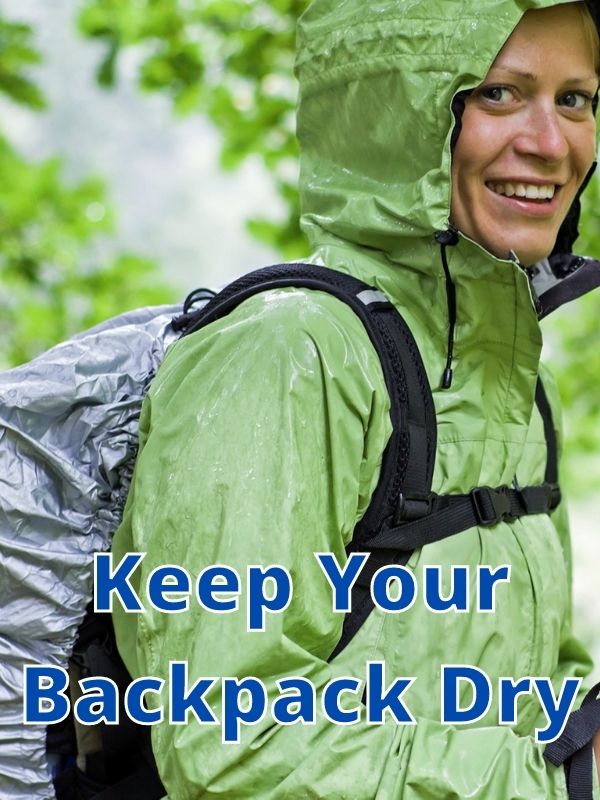
Some backpacks are great at keeping the rain out, but most of them are not completely rainproof. If you expect consistent rain it’s a good idea to invest in a rain cover for your backpack or to get a high-end waterproof backpack.
The backpack that I own has a level of waterproofness, yet the zippers and material will eventually get saturated with water and start to leak. In my case, I would need a backpack cover during long periods of rain.
If I were hiking with little rain or light rain, I would likely be fine, but it’s good to be prepared since the weather can change fast.
Recommended Backpacks and Backpack Covers
Depending on your needs, having a waterproof backpack or a waterproof backpack cover may be better.
Waterproof Backpack
RECOMMENDED GEAR
You can buy a dry bag backpack or get a backpack that has a rain cover with it. Covers can be built-in or be a separate piece.
Protecting Your Tent From the Rain
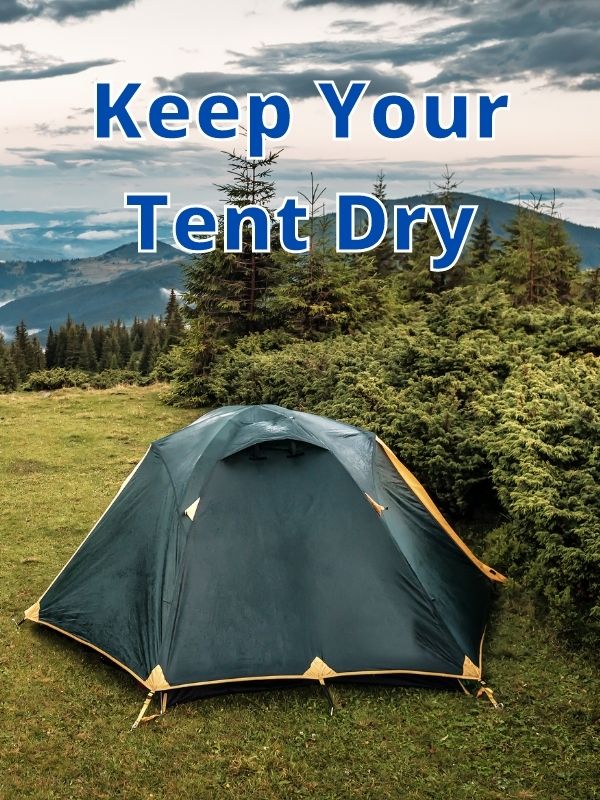
Most new tents will be somewhat water-resistant and come with a waterproof cover. It’s always a good idea to get a tent that has taped seams. Taped seams prevent water from coming in.
If your tent doesn’t have taped seams, you can get a waterproofing spray to spray along all of the seams to help prevent water from penetrating the material. In light rain, this might not matter, but during heavy rain, your tent may or may not be water-resistant enough to protect you.
Make sure to place the tent cover or rain fly on the tent correctly. Sometimes, if the tent cover touches the tent it may lead to water soaking through to the tent.
To ensure the tent functions properly, make sure it is completely dry before you pack it away, if possible. A wet tent may not be protected from the rain because the water has penetrated the fibers for long periods.
The final gear you will likely want to have is a tent footprint or the waterproof tarp that goes under the tent. If you expect the ground to get saturated with water, a footprint may help prevent water from seeping up into the tent if the bottom of the tent isn’t fully waterproof.
Recommended Tents and Tent Footprints
Protecting your equipment at night while you sleep will ensure rain doesn’t get into anything and you can enjoy a dry day of hiking.
Waterproof Tents
RECOMMENDED GEAR
A full cover rainfly will protect your tent better, while a top cover rainfly will do a good job in most conditions. If you expect a lot of rain, get a full cover.
Final Thoughts
If you know what the weather will be like, you have more options for what kind of gear you know you’ll need. If you are hiking for more than a couple of days, you’ll want to be prepared for rainy conditions.
Choosing the right kind of gear can mean the difference between having a good time and a miserable time. It’s important to get gear that will last and work each time you use it. Try to buy quality products and only try products your are not sure about if you’re okay with the chance that it may fail.
Many hikers want to pack light so they have a more enjoyable hike. You can find good lightweight options for waterproofing yourself and your equipment.
Keep in mind that you may be able to hike longer with a lighter backpack. You’ll have fewer foot aches and other aches. Yet, if you pack light, you may not be as comfortable if you fail to carry the protective gear for rainy conditions.
My suggestion is to find lightweight rain gear that will help you hike in comfort and still stay protected most of the time. Happy hiking, and stay dry.
Thanks for visiting Helpshoe.com

